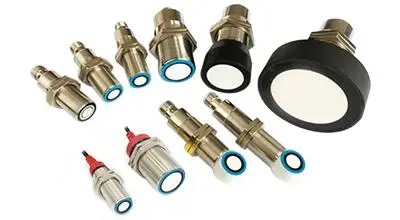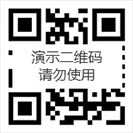Classification of Ultrasonic Sensors
Sensor: "Can sense the specified measured object and convert it into usable according to certain rules
The signal device or apparatus is usually composed of sensitive elements and conversion elements. A sensor is a detection device that can sense the measured information and convert it into electrical signals or other required forms of information output according to certain rules, in order to meet the requirements of information transmission, processing, storage, display, recording, and control. It is the primary step in achieving automatic detection and control.
At present, there is no unified classification method for sensors, but the following three are commonly used:
1. According to the physical quantities of sensors, they can be classified into sensors such as displacement, force, velocity, temperature, flow rate, gas composition, etc
2. According to the working principle of sensors, they can be classified into sensors such as resistance, capacitance, inductance, voltage, Hall effect, photoelectric, grating, thermocouple, etc.
3. According to the nature of the sensor output signal, it can be classified into switch type sensors that output switch values ("1" and "0" or "on" and "off"); Output as analog sensor; A digital sensor that outputs pulses or codes.
Here, we mainly introduce a widely used sensor in daily life that brings great convenience to human society - ultrasonic sensor and its application in reverse radar.
Introduction to Ultrasonic Sensors
Ultrasonic sensors are sensors developed using the characteristics of ultrasonic waves. To use ultrasound as a detection method, it is necessary to generate and receive ultrasound waves. The device that completes this function is an ultrasonic sensor, commonly known as an ultrasonic transducer or ultrasonic probe.

Ultrasonic probes are mainly composed of piezoelectric chips, which can emit and receive ultrasonic waves. The core of an ultrasound probe is a piezoelectric chip inside its plastic or metal casing. There can be many types of materials that make up a chip. The main materials for ultrasonic sensors are piezoelectric crystals (electrostriction) and nickel iron aluminum alloys (magnetostriction). Materials for electrostriction include lead zirconate titanate (PZT) and others. The ultrasonic sensor composed of piezoelectric crystals is a reversible sensor that can convert electrical energy into mechanical oscillations to generate ultrasonic waves. At the same time, when it receives ultrasonic waves, it can also be converted into electrical energy, so it can be divided into a transmitter or a receiver. Some ultrasonic sensors can be used for both transmission and reception. Ultrasonic sensors consist of a transmitting sensor (or wave transmitter), a receiving sensor (or wave receiver), a control part, and a power supply part. The transmitter sensor consists of a transmitter and a ceramic oscillator transducer with a diameter of about 15mm. The transducer converts the electrical vibration energy of the ceramic oscillator into super energy and radiates it into the air; The receiving sensor consists of a ceramic oscillator transducer and an amplification circuit. The transducer receives waves and generates mechanical vibrations, which are converted into electrical energy and used as the output of the sensor receiver to detect the transmitted ultrasonic waves. The control part mainly controls the frequency, duty cycle, sparse modulation, counting, and detection distance of the pulse chain emitted by the transmitter.
Working principle of ultrasonic sensor
Ultrasonic sensors are sensors developed using the characteristics of ultrasonic waves. Sound waves are the propagation form of mechanical vibration states of objects. Ultrasonic waves refer to sound waves with a vibration frequency greater than 20000Hz, and their frequency of vibration per second is very high, exceeding the upper limit of human auditory perception. People call these inaudible sound waves ultrasonic waves.
Ultrasonic waves are a type of mechanical oscillation in elastic media, which can take two forms: transverse waves (transverse waves) and longitudinal waves (longitudinal waves). Vertical oscillation is mainly used in industrial applications. Ultrasonic waves can propagate in gases, liquids, and solids at different speeds. In addition, it also exhibits refraction and reflection phenomena, and undergoes attenuation during propagation.
The propagation laws of ultrasonic waves in media, such as reflection, refraction, diffraction, and scattering, are not fundamentally different from those of audible sound waves. Compared with audible sound waves, ultrasound has many peculiar characteristics: propagation characteristics - ultrasound has poor diffraction ability and can propagate in a straight line in a uniform medium. The shorter the wavelength of ultrasound, the more significant this characteristic becomes. Power characteristics - When sound propagates in air, it drives particles in the air to vibrate back and forth and do work on them. At the same intensity, the higher the frequency of a sound wave, the greater its power. Due to its high frequency, ultrasound has a significantly higher power compared to regular sound waves. Cavitation effect - When ultrasound propagates in a liquid, small voids are generated inside the liquid due to the intense vibration of liquid particles. These small voids rapidly expand and close, causing violent collisions between liquid particles, resulting in pressures ranging from thousands to tens of thousands of atmospheres. The intense interaction between particles can cause a sudden increase in the temperature of the liquid, leading to emulsification of two immiscible liquids (such as water and oil) and accelerating the dissolution of solutes and chemical reactions. The various effects caused by the action of ultrasound on liquids are called cavitation of ultrasound.
Characteristics of ultrasound:
(1) Ultrasonic waves have strong directionality and are easy to concentrate energy during propagation;
(2) Ultrasonic waves can propagate in various media and can travel a sufficient distance; (3) The interaction between ultrasound and sound medium is moderate, making it easy to carry information about the state of the sound medium (diagnosis or effects on the sound medium).
In the various industrial revolutions of human civilization, sensing technology has always played an important role as a pioneer. It is a key technology that runs through various technological and application fields, and is almost ubiquitous in all imaginable fields.
With the advancement of sensor technology, sensors will evolve from having simple judgment functions to having learning functions, and ultimately to having creativity. In the new century, looking ahead to the future, ultrasonic sensors, as a new and very important and useful tool, will have great development space in all aspects, and it will develop towards higher positioning and precision. In meeting the increasingly developing social needs, sensors with a new appearance will play a greater role.

